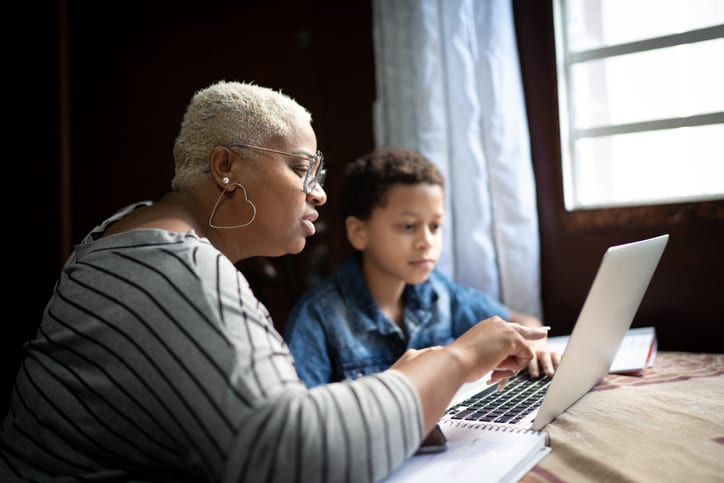This brave new world, with it’s internet and predators and easy access into our homes through a million devices and portals, can be terrifying for parents. How do we protect our kids? How do we teach them how to protect themselves? What do we allow when, and how?
There are so many questions and sometimes, too many answers – but if you’re looking for a simple, solid way to start, these 5 cardinal rules of internet safety should never be broken.
5. Set up a recovery phone number.

Image Credit: iStock
Adding your phone number to accounts allows websites and institutions to get ahold of you in the case of a breach, and it allows provides a way for you to get back in if you’re locked ou.
Your child should memorize your phone number anyway (even if you barely know two or three by heart yourself), and coming up with a rhyme or song to teach it to them could be fun!
4. Strengthen your passwords.

Image Credit: iStock
More than half of people use the same password across many sites, which helps us remember them, but it’s risky. You should set up a password manager that syncs passwords across devices – that way you can’t forget them, either.
You can use the practice to teach your kids about creating strong passwords, and also that you never give them to anyone outside of your family.
3. Talk about what might happen.

Image Credit: iStock
You can never prepare for everything, and it’s important your family have a plan for what to do if and when they encounter something they’re not sure about – a video, and add, random messages, or just anything that makes them uncomfortable.
You can also begin a discussion about ways you can tell if something or someone has bad intentions, and by asking questions instead of giving them answers, you can train them to think critically for themselves.
Another fun way to make it a game is to have them imagine themselves a detective out to determine whether or not something is legit.
2. Use two-factor authentication.

Image Credit: iStock
This is a powerful tool that’s easy to implement and to use; if an account offers it, you should take them up on it.
You can show your kid how it works by locking up something they want, like candy, inside not one, but two locks – and then only giving them the key to one of them.
1. Take a Google security checkup.

Image Credit: iStock
Google offers a free step-by-step Security Checkup that takes just two minutes to complete. It will show third-party apps you’ve granted access to, all of the devices using your account, recent events that could present a security risk, and anything else that just feels off.
You can equate caring for your security the same way you care for a pet – it’s something you do every single day, so that you realize right away if something is wrong.
I don’t know about you, but I need a deep breath and a drink.
If you’re a more experienced parent, where do you start with internet safety? Enlighten us in the comments!
